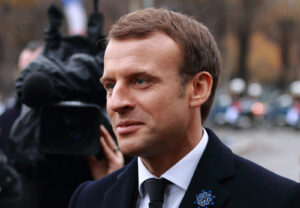by Niels Wiese; Laurea Magistrale in Relazioni Internazionali
When the newly elected German Chancellor Olaf Scholz announced the latest COVID-19 measures, aimed to slow down the spread of Omicron, at the Federal Press Conference on January 7, a certain “Corona fatigue” was tangible in many parts of the Federal Republic.
The new measures against the 5th wave were as expected: social contacts to be further reduced, the quarantine period was shortened, masks are to be compulsory for all residents, and the 2G-plus rule (only fully vaccinated and recovered persons allowed to enter indoor areas and events) was to be introduced in the restaurant sector nationwide as a short-term measure.
The mood prevailing in Germany in 2022 is one of resignation and fear for the majority of the population. A population that continues to take the virus very seriously and has been following measures to contain the spread of the virus for 22 consecutive months. This can be seen in the high number of daily booster vaccinations.
However, a slowly growing part of the German public is entirely against the COVID-19 measures and is also immune to any logical argument to fight the pandemic. Almost daily, this small but now more or less militant segment of the population demonstrates on the streets of medium-sized cities like Magdeburg, Rostock, or Heidelberg. Far too often, their demonstrations end up in violence against local law enforcement officers. The demands of the so-called “walkers” or “lateral thinkers” range from a complete end to nationwide COVID-19 measures to simply denying the virus exists.
Mixed in with these claims are other bizarre views that are more reminiscent of the Pegida protests of 2016 or the Q-Anon movements in the United States. To put this dimension of discontent in an international context, it is essential to mention that there was no full lockdown in Germany, unlike in other European countries. The measures adopted in March 2020 never went so far as to prevent people from leaving their apartments or houses. Despite the tense situation, it was possible to play sports, walk your dog, or meet on the street at a distance. After being closed for months, schools, retail, and restaurants were the most negatively affected sectors.
Nevertheless, the first protests began as early as May 2020, initially organized as central events under political activist Michael Ballweg, who seems close to the Reichsbürger movement. The “Reichsbürger,” which translates to “citizens of the Reich,” rejects the modern German state and insists that the German Empire’s 1937 or 1871 borders still exist and that the modern country is an administrative construct still occupied by Allied powers.
In the last months, the protests became more decentralized and the demands more and more radical. Thus, as early as September 2020, the stairs of the Reichstag in Berlin were stormed, and the demonstrators waved imperial war flags. The German Office for the Protection of the Constitution considers that there is currently a tendency towards radical violence, with an increasing radicalization of what used to be partly middle-class sections of the population (especially in eastern Germany), and the willingness of individual anti-vaccination activists to resort to violence. For example, in a case uncovered by the ZDF magazine “Frontal” in December 2021, about 30 Telegram group members “Dresden Offlinevernetzung” discussed concrete murder plans against the incumbent Prime Minister of Saxony Michael Kretschmer. As a result, the State Criminal Police Office of Saxony conducted raids and arrested seven suspects.
With all of these social upheavals, it’s important to note that Germany has a below-average vaccination rate of 72.5% within the European Union. Especially in the federal states of the former GDR, particularly in Saxony (62.5%) and Thuringia (68.7%), the percentage of the population who are unwilling to be vaccinated is alarmingly high. Unfortunately, a large part of these nearly nationwide 11 million “vaccination skeptics” is no longer accessible to information campaigns by the federal government or physicians. Therefore, it is unclear how these populations can be reintegrated into society soon.
To increase the number of vaccinations ahead of a possible new wave this fall, the federal government made a 180-degree turn, and Chancellor Olaf Scholz has said he favors compulsory vaccinations for everyone eligible. It is an unprecedented change in this sensitive point of pandemic control because both Angela Merkel and Olaf Scholz had always categorically excluded it several times in the last two years. But the measure is criticized, and many hurdles remain. Whether this vaccination mandate ever comes into force is still up in the air. The liberal FDP (with which Olaf Scholz of SPD and the Greens form a coalition) does not appear to support such a move. The German Bundestag, the supreme constitutional organ of the Federal Republic of Germany and the only organ of the state directly elected by the people, will vote over the vaccination mandate, and the outcome is open.
In the coming months, the new German government will have to unite the German society or risk encouraging a new rise in the German far-right, which seemed to regress during the previous elections.




